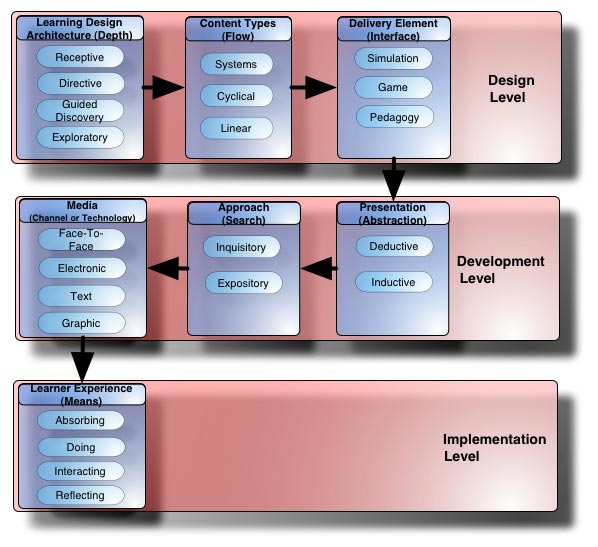One of the first definitions for e-learning is
ASTD's, who define it as covering a wide set of applications and processes, such as Web-based learning, computer-based learning, virtual classrooms, and digital collaboration. It includes the delivery of content via Internet, intranet/extranet (LAN/WAN), audio- and videotape, satellite broadcast, interactive TV, and CD-ROM.
ASTD's definition is somewhat different in that it basically defines anything that is electronic (electronic learning) as e-learning. On the other hand, Marc Rosenberg confines it to the internet in his book,
e-Learning: Strategies for Delivering Knowledge in the Digital Age (2001):
e-Learning refers to the use of internet technologies to deliver a broad array of solutions that enhance knowledge and performance. It is based upon three fundamental criteria:
- It is networked
- It is delivered to the end-user via a computer using standard internet technology
- It focuses on the broadest view of learning.
In a May 2003 article on CLO,
Organizing Enterprise-Wide E-Learning and Human Capital Management, e-learning is defined as including not only Internet-published courseware, but also the tools for managing, modularizing and handling the following:
- Different kinds of content and learning objects (including both electronic and non-electronic forms, and even traditional classroom instruction).
- Just-in-time and asynchronous learning, such as virtual labs, virtual classrooms and collaborative work spaces.
- Simulations, document repositories and publishing programs.
- Tools for prescribing learning, managing development pathways and goals and handling e-commerce and financial transactions related to learning.
- The utilities and capabilities for supporting informal learning, mentoring, communities of practice and other "non-training" interventions.
In other words, e-learning does everything in the corporate world but
training! The author misses the mark on this one as a major part of "e-learning" is of course "learning." However, there are two parts to learning, just as there are in performance. Gilbert said that performance has two aspects: behavior being the means and its consequence being the end (1998). Learning is similar in that it also has two aspects: training or teaching being the means and its consequence being the end. Now the training or teaching may be self-taught, accidental, informal, or purposeful, however, there is a means and the consequence is learning.
In a recent new article,
IBM tackles learning in the workplace (Nov 8, 2004), Victor Jeurissen, global practice leader for IBM Management Development Solutions, defines e-learning as, "the use of innovative technologies and learning models to transform the way individuals and organisations acquire new skills and access knowledge." He further defines learning as �a collaboration of information, interaction, collaboration and in-person."
IBM's definition is the most interesting and promising in that it also refers to the two aspects of learning -- "innovative technologies and learning models" to provide the means, with the consequence being "acquiring new skills and access knowledge."
The "means" provide the learner experience of absorbing (reading, seeing, etc.) doing (activity), interacting (with people), and reflecting (connecting the new learnings with previous learnings). And so that the right skills and knowledge are learned (consequence of training/teaching), rather it be face-to-face or over the internet, requires design and development:

Further information on the above chart may be found at: Learning Framework.
The reason that we have to design and develop for the "right skills and knowledge" is that we are accountable to the organization for spending resources wisely. In the IBM article, Victor Jeurissen further remarks that, "75% of CEOs think employee education is the most critical success factor relative to other people issues. Learning directly supports the top agenda of CEOs, business groups and customer responsiveness." This of course takes us to the analysis of learning: the study we do in order to figure out what to do. Analysis allows us to directly make a positive impact upon the business or organization so that we do indeed support the CEO, various business groups, and customer responsiveness. For more information on analysis, see Needs Analysis.
By viewing e-learning and learning as having two aspects, we can better define learning's role in the organization.
Comments welcomed.

1 comment:
Just wanted to drop you a line (from Denmark). To tell you that I think your site is great! It's the first time I've come across it and found it an extremely useful starting point, providing a useful framework to structure my own thinking. Thanks very much for making this information available.
Post a Comment